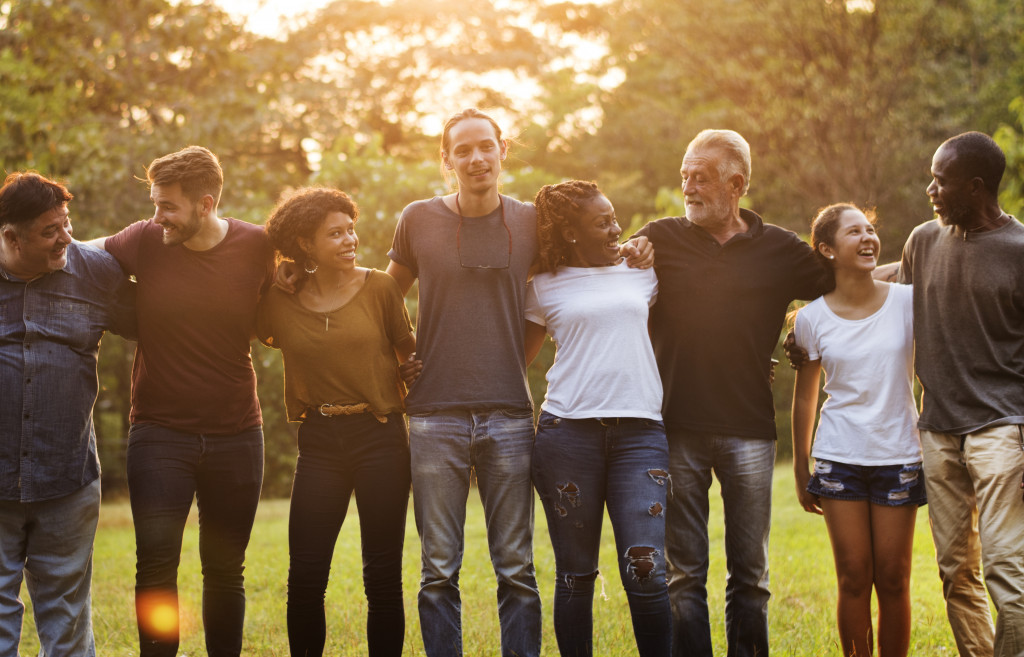Everyone has the power to make communities safer, starting with each person in it. Creating a safe environment for everyone takes more than just law enforcement. It is an ongoing effort that requires the participation of individuals, organizations, and government agencies. While it is important to report crimes and suspicious activities, there are other measures that can help make communities safer. Here are some practical steps you can take to contribute to a more secure environment.
1. Be Informed About Your Community
The first step in creating a safer community is to know what’s going on around you. This means staying informed about local news and events, attending community meetings, and connecting with neighbors. Knowing what’s happening in your area will help you identify any potential safety issues or concerns. It also allows you to get involved in initiatives that promote safety in your neighborhood.
If you can’t attend periodic meetings, join an online community or support group. This will give you information on crime prevention tips and other safety initiatives that can help protect your community. Look for crime prevention classes, self-defense workshops, or parenting seminars in your area. You may also be able to find public safety resources online.
2. Reach Out to the People in Your Community
Building solid relationships with people in your neighborhood can go a long way toward improving safety. Introduce yourself to new families or individuals who move in, invite them to a community event, or just strike up a conversation. Get to know your local businesses and the people who work there.
Additionally, you may be able to help the vulnerable members of your community. This could include people struggling with addiction who may pose a threat to everyone’s safety if not given the proper care. Consider reaching out to drug and alcohol rehab clinics in your area for assistance or guidance. They may be able to provide more in-depth assistance and resources to those who are struggling.

3. Support Local Law Enforcement & Emergency Services
Police officers, firefighters, and paramedics are often on the front lines when protecting communities from harm. Supporting your local law enforcement and emergency services can go a long way towards helping keep your community safe—from providing resources for training and equipment to advocating for increased funding for these essential services. Showing your appreciation for their hard work and dedication is also important!
You can also help by volunteering in your local area. Consider joining a neighborhood watch program or providing rides for senior citizens who may not be able to drive themselves around. If you know any well-trained first responders, offer to help with training or disaster preparedness events. This may include participating in drills, helping to set up emergency shelters, and more.
4. Take Part in Community Events & Projects
Events like neighborhood cleanups or block parties are great ways to build strong community relationships while promoting safety. These events often bring out people from all walks of life who can share their ideas and experiences on creating a safer environment. Participating in such activities also sends a message that you care about your neighborhood and are willing to work together toward making them a better place for everyone to live.
Look for other community events such as festivals, parades, concerts, and sporting events to get involved in. You may also be able to participate in initiatives such as creating neighborhood watch programs or joining a local community advisory board. These projects can help you get to know your neighbors better and foster a sense of trust within the community
5. Advocate for Change
If you’re concerned about specific safety issues in your area, speak up. Reach out to your local representatives, write letters or emails, and attend meetings to express your concerns. You can also look for advocacy groups in your area that are working to make a change.
If you’d like to take action, consider organizing your own events, such as a march, rally, or petition drive. Get to know your local officials and build relationships with them so that they can understand the importance of creating a safe and secure community. You may also be able to join a local political organization that focuses on community safety.
Creating a safe community takes effort and dedication from everyone involved, but it is possible! By reaching out to your neighbors, supporting local law enforcement and emergency services, taking part in community events and projects, and advocating for change, you can help make your area a safer place for all. So get out there and make a difference!




